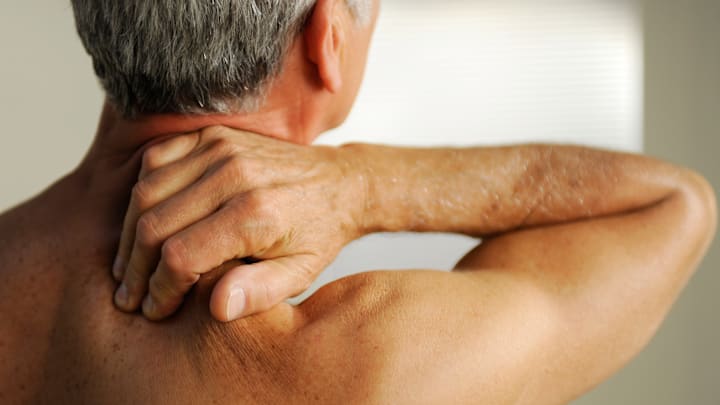At some point in their lives, most people develop some kind of muscle tension or pain in their neck. The cause could be unknown (idiopathic), or might be tied to a specific event—like sleeping on a shoddy pillow. “I have this knot in my neck,” you might complain.
The pain is real, but the term is misleading.
What Muscle ‘Knots’ Really Are
According to Harri Weber of Popular Science, “muscle knots” are actually myofascial trigger points (in fairness, not nearly as catchy) that consist of contracted muscle fibers that are unable to release the contraction. When these fibers grow tense, it can feel like a bump (or knot) beneath one’s skin.
“It’s basically a specific localized area where muscle is not relaxing like it should be,” Michael Johnson, a clinical massage therapist, explained in a University of Wisconsin article on the ailment. “The tension in the muscle can put pressure on nerves and cause pain.” Worse, pain from the site can be “referred” to nearby regions, like the ear or head.
Muscle knots are often found between the shoulder blades or upper back and can be the result of unnatural positions, like a cramped sleeping configuration or a craned neck from gazing at a smartphone for too long. If you pull or injure a muscle from physical exertion, then you might get a muscle knot as your body tries to insulate the area with contracted muscles. Repetitive motion, including sports activities, can also inflame tissue.
Origins of the Term ‘Muscle Knot’
How did we come to call these contracted fiber clumps “knots”? It’s difficult to pinpoint who coined the phrase, but it’s been with us for some time. In 1890, a columnist for the New York Star who was reprinted in Pennsylvania’s Pinegrove Herald wrote of an encounter with a strongman, whom he quoted:
“While athletes usually enjoy better health than the ordinary man, they suffer from ailments which are unknown to the latter, and for which even our physicians have no name. A muscle may knot, and the strength is then all gone: while a fiber will break, and the slightest movement for the next day or so is untold agony.”
A decade later, one 1901 advertisement for rheumatoid arthritis relief tried to draw the attention of anyone suffering from “muscles in knots.” Both strongmen and chronic pain sufferers, it seems, caught on to the phrase early.
How to Treat Tense Muscles
Knots caused by napping or hefting car tires can be treated similarly. Avoiding postures or activities that cause knots is the best preventative step you can take, along with stretching. If you already have one, a massager, compress, or anything to help direct blood flow to the area can alleviate discomfort.
Avoiding prolonged sitting is also helpful. Sports medicine specialist Michael Dakkak, DO, recommends proper ergonomics. “You want a headrest, a raised keyboard, your screen at eye level — those are all very important — but then, you also want to take breaks sporadically throughout the day and walk around and work on your posture,” he told Cleveland Clinic.
The clinic also recommends staying hydrated, eating a balanced diet with potassium and magnesium, and using massage guns. Any persistent knots should be examined by a physician before they can potentially develop into frayed nerves.
Get Answers to More Big Questions:
